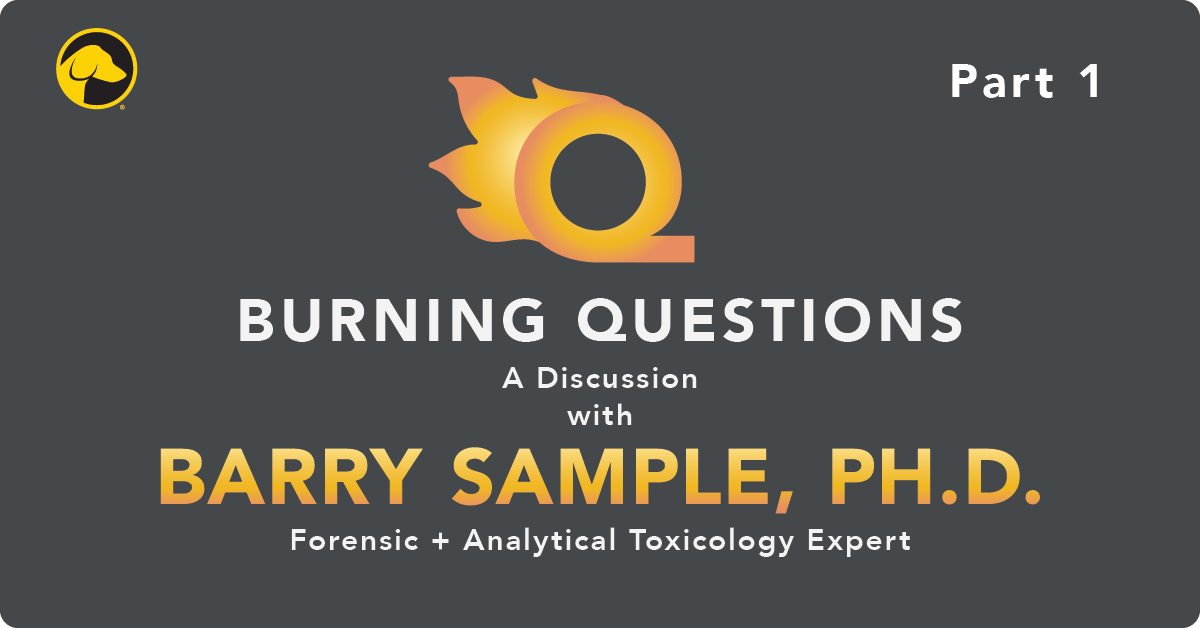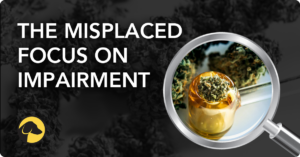
Part One: Breath Testing Burning Questions with Barry Sample, Ph.D.
The science of breath testing is changing the drug testing industry and shedding new light on the importance of knowing when, not just if, an employee used cannabis. And while the research and technology behind breath testing is both novel and groundbreaking, it’s also critical to describe how the science will bring added value to employers, employees, and the market at large.
So, I reached out to world-renowned toxicology expert and Hound Labs’ scientific advisor, Barry Sample, Ph.D., to find out. Dr. Sample is a consultant in forensic and analytical toxicology, anti-doping, and workforce drug testing and has more than 40 years of experience leading science and technology initiatives. Dr. Sample sits on Hound Labs’ Scientific Advisory Board as Senior Science Consultant.
We spent time discussing breath from a scientific perspective and the advantages this new category of drug testing will bring to the workplace. Here are some key excerpts from our conversation.
What is the goal of workplace drug testing?
It’s really always been about deterrence. One of the main reasons employers drug test is to help ensure that employees don’t report to work on drugs, thereby affecting their performance and perhaps becoming a safety risk. The goal is not to detect impairment, per se; it’s more about deterring the use of drugs by employees so that they aren’t experiencing the effects of drugs when they report to work.
Speaking of detection, several drug test types exist today, and they all detect the usage of marijuana over different timeframes. Can you please explain what a window of detection is and why different biological samples provide different detection windows?
In drug testing, a window of detection indicates how long a test will detect a drug in a biological sample, such as breath, oral fluid, urine, or hair. In the case of cannabis, the detection window for THC, the principal psychoactive compound found in cannabis, and its major metabolite varies depending on which type of drug test is performed and what cutoff level is utilized.
THC in biological samples will generally decrease in concentration within the body over time following use. The detection window for urine, for example, is longer than for breath because the THC may be sequestered in fat tissue and then slowly released. Rather than THC itself, the primary metabolite (carboxy-THC) is the target of urine testing.
THC is present in oral fluid primarily through deposits that linger in the mouth after use of the drug. When someone smokes or consumes an edible containing cannabis (such as gummies or a brownie), THC is sequestered in the oral mucosa or tissue in the mouth and released into the saliva. Even though an oral fluid cannabis test has a much shorter detection window than urine, residual THC in oral fluid can trigger positive drug test results hours after the detection window closes in breath testing.
THC is detected in the breath after it has moved into the lungs from the bloodstream.1 Because blood THC levels decline rapidly and breath is a minor route of elimination, breath testing has the shortest detection window of all sample types – meaning that a positive breath test result is most likely to be associated with recent cannabis use that occurred within a few hours of the test.
Some employers have discontinued testing for cannabis. They say, in part, it’s because they would prefer to test for only recent use since they’re challenged to hire candidates who can pass a conventional cannabis test. While waiting for our recent use breath test, what’s your sense of why employers didn’t just make the move from urine to oral fluid to help resolve a portion of their cannabis positivity problem?
Even though the detection window in oral fluid is shorter than urine, oral fluid testing has a higher positivity rate than urine. If employers are removing cannabis from their urine drug testing panels because they’re having difficulty finding qualified applicants who can pass a conventional test, switching to oral fluid may actually have the opposite effect they are looking for.
Recent drug testing data indicates that post-accident positivity is increasing. In the era of cannabis legalization, is this surprising to you, and should it affect how employers determine when and how to drug test?
Over the course of more than a decade, there’s been a twofold increase in the difference between post-accident and pre-employment test positivity (26% vs 59%) and an even larger, more than fourfold increase, between post-accident and random tests in the general workforce.2 In the federally mandated safety-sensitive workforce, there’s been a 30-fold increase in the difference in post-accident versus pre-employment drug test positivity (2% vs 62%).3
Seeing this data does raise the level of suspicion. Whether it’s proximate (recent) use or a marijuana-using lifestyle, it begs the question of whether there is something about their marijuana use impacting these individual’s performance in such a way that they’re more likely to be involved in an incident prompting the drug test.
But, societal attitudes about marijuana are changing; it’s not surprising to me that positivity rates are going up across all testing reasons. What should be of particular note is that post-accident positivity has been increasing more than pre-employment positivity leading to the increased gap in post-accident versus pre-employment cannabis positivity.
In addition to state-by-state cannabis legalization, other new state laws – such as California A.B. 2188 and Washington S.B 5123 – aim to provide employment protections for off-duty cannabis use while limiting tests that detect non-psychoactive metabolites in the drug. How does breath testing as a new sample type fit into these evolving laws?
Breath has a place in those states. California and Washington have restricted many THC testing scenarios to just the parent compound, limiting tests that screen for non-psychoactive metabolites. Since breath and oral fluid both test for the parent compound, both these tests would be compliant with these new regulations. However, urine and hair, which test for non-psychoactive metabolite, are mostly off the table for cannabis testing in those states.
Why is now the right time for employers to consider adding breath testing to their drug testing programs?
Breath provides a new way to identify very recent (proximate) cannabis use in a way that supports both employer and employee needs. A definite component of it is helping employers ensure they have a safe and productive workforce while adapting to evolving societal attitudes in general.
Employers may care less about what an employee is doing in their off time as compared to what that person did just before work, on break, or at lunch. And with a test like breath capable of isolating use to the last several hours, employers can really zero in on proximate use and employees who are more likely to be experiencing the effects of cannabis while they are at work. That’s the real value.
You brought up the value of recent use. Can you please elaborate on the benefits recent use breath testing can provide to employees and employers alike?
I think employees are going to think it’s fairer and less intrusive because a proximate use breath test limits employers from knowing what an employee did in their free time and in their private lives.
And employers may be increasingly sensitive to that in this era of cannabis legalization. They may care more about employee relations and supporting employees’ personal decisions about how they spend their free time. Really, they may be in a position to narrow their focus to what employees have done right before coming to work. Technology such as breath that can focus on proximate use, narrows that detection window substantially and fits very nicely into what may be a change in how society views drug use in general.
Finally, we’ve heard for years that the federal government will take cannabis off the Schedule 1 list of drugs. You’ve been in this industry a long time. Do you think that will actually happen, and what impact may that decision have on drug testing?
I think it’s entirely possible there will be a change in the scheduling of marijuana at the federal level within the next decade. I believe it is more likely that cannabis will land on the Schedule 2 list, but I don’t rule out marijuana being scheduled down even further or removed altogether. But by the same token, I believe there may still be the ability for a “safety-sensitive” carve-out within DOT federally mandated drug testing.
COMING SOON
Thank you to Dr. Sample for taking the time to answer my questions. We’ll continue this series to discuss why determining impairment for cannabis is altogether different from alcohol and how breath testing may reduce drug test cheating issues that can occur using other sample types.
For more information on the HOUND® CANNABIS BREATHALYZER, click here.
Footnotes
1 Clinical Chemistry
2 Quest
3 IBID

August 3, 2023
By AARON ATKINSON
EXECUTIVE VICE PRESIDENT OF MARKETING
Share











